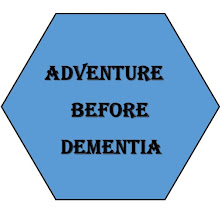Next stop was St. Patrick's Cathedral, mother church of the Archdiocese of Melbourne. It was built in the mid-1800's, in the Gothic Revival architectural style. Nearby, we also saw the State Houses of Parliament, which served as the national seat of government for a time before Canberra was established as Australia's capital.
We’d already heard about the Melbourne Cup (horse-racing) and the Australian Open (golf), but today we saw some of the sports arenas that made Melbourne the sports capital of Australia. There are huge complexes for Aussie rules football, soccer, rugby, cricket, tennis, swimming, even field hockey. These people are seriously crazy about their sports. (Thanks to Melbourne Sports Authority for aerial photograph.)
Next stop was Altman and Cherny, opal dealers extraordinaire. Here we learned all about opals. Australia produces 90% of the world's precious opals including the most rare and valuable black opals. In the safe at this store sits "Olympic Australis,” the world's largest opal - 17,700 carats (over 7 pounds, uncut) and valued in the millions.
We visited the War Memorial, known locally as the Shrine of Remembrance. The building is designed so that on Memorial Day at 12 noon, a ray of sunlight shines through a small hole to illuminate a simple plaque which says "Greater Love Hath No Man." We participated in a re-enactment of the annual ceremony held here, with the light provided artificially.

Final stop was Queen Victoria Market, Melbourne's shopping mecca - a giant complex of sheds housing fresh seafood and other meats, fruits and vegetables, clothing, toys, jewelry and souvenirs. We had lunch in the deli shed and then wandered around taking in the sights (and supporting the local economy).
In late afternoon, we went by bus to Phillip Island, about 1.5 hours south of Melbourne. In spite of drought conditions elsewhere, this little island's rolling hills were lush and green. Our aim was to see the tiny (17") fairy penguins as they emerge from the ocean and cross the beach to their sand burrows. At this time of the year, the young are in or near the burrows eagerly awaiting their parents return. After a day or more foraging out at sea, some of these little guys can barely waddle. They arrive in small groups, wave after wave - it was quite a spectacle.








